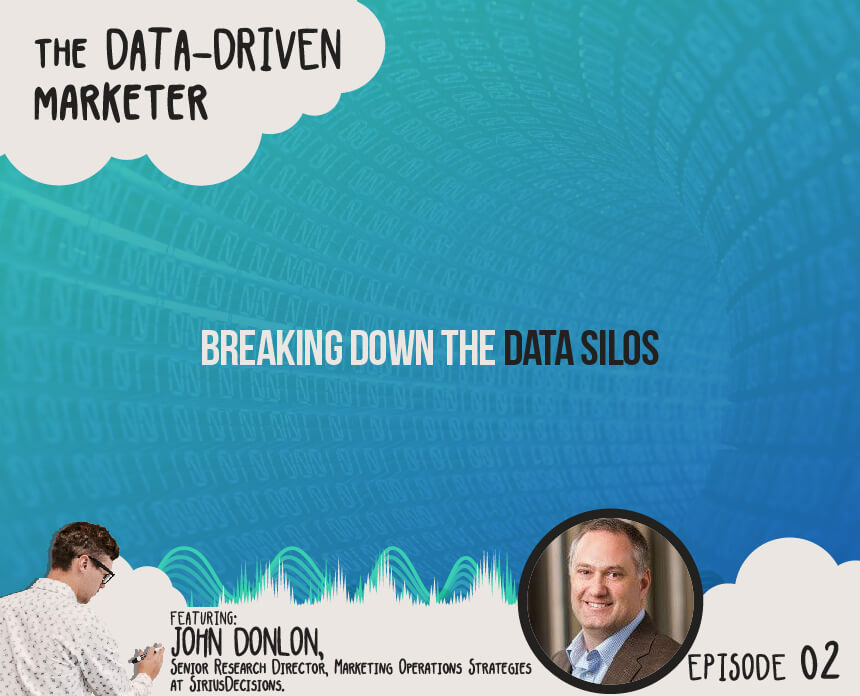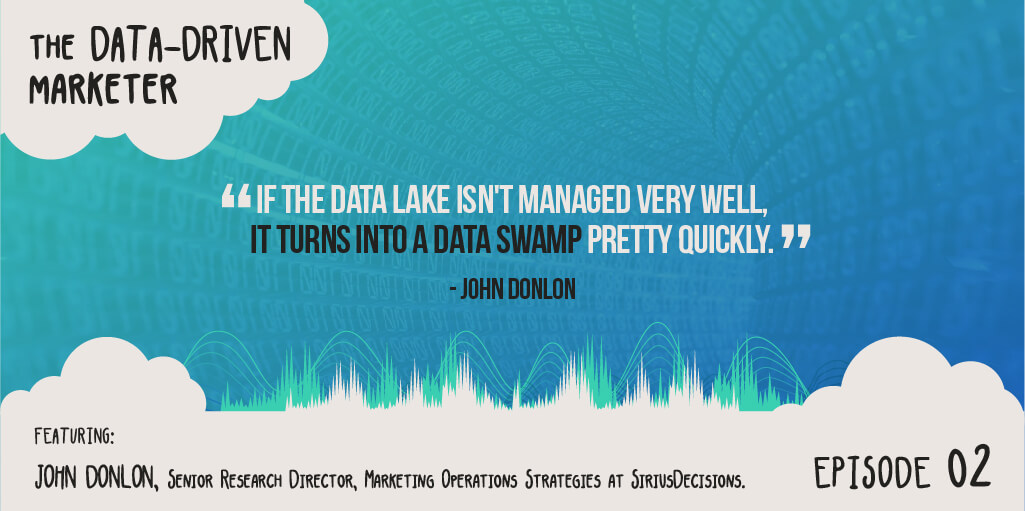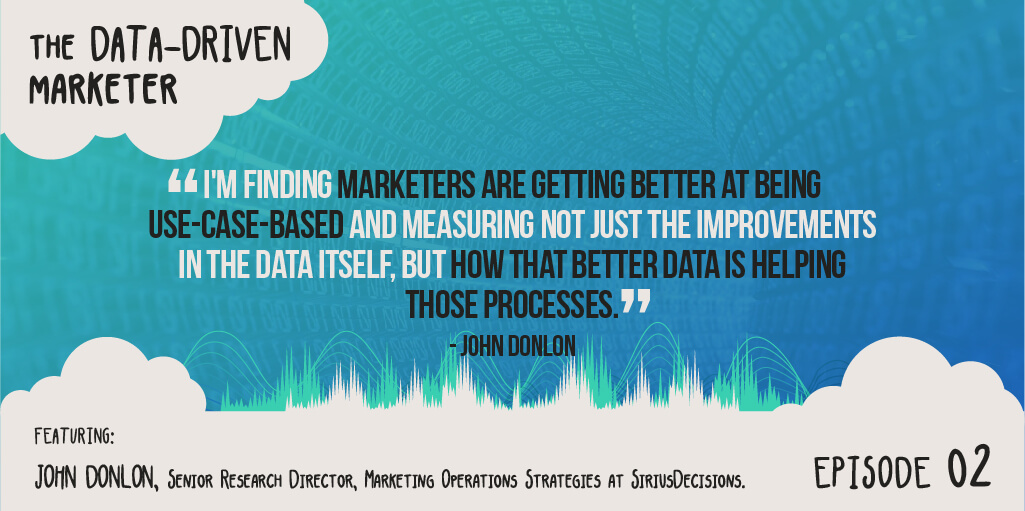
The Data-Driven Marketer Ep.2: John Donlon – Senior Research Director of Sirius Decisions
As marketers, we’re drowning in data.
Showing companies how to handle this data deluge is the job of John Donlon, Senior Research Director, Marketing Operations Strategies at SiriusDecisions.
SiriusDecisions is a B2B research and advisory firm. They use data, research, and models to help organizations grow by engaging with leaders in sales, marketing, and product development.
How Companies Should Look at Their Data
Many companies are trying to transition away from and eliminate data silos. The silos usually happen as a result of separate delivery systems that have incompatible analytics. Over the last three years, companies have been trying to connect all this information.
Three Layers of Technology That Organizations Need to Adopt
In most cases the marketing tech stack grew organically with lots of different technologies from different vendors. So coming up with an actionable strategy to eliminate data silos has become increasingly difficult.
Donlon suggests you think of everything in three layers.
The Data Layer
That’s where all the information from the delivery systems comes together. It can be prepared, rationalized, normalized, or in some way processed so it’s ready to be analyzed.
For some organizations, the first question is where to locate all the data. Does it have to physically be in one place? The next question is the degree to which they need to rationalize that data. Many are just dumping everything into one location called the data lake.

You need to figure out which values and fields need to be mapped to what. You need to standardize and normalize the data.
Many companies are trying to create a customer data platform (CDP) but so far it’s still a work in progress. Like the CRMs at the beginning of this century, CDPs are supposed to give a 360-degree view of the prospect or customer.
CDPs haven’t delivered on that promise yet and privacy regulations like GDPR may make it difficult to ever get a complete CDP.
The Analytics Layer
Many organizations have tools that can do broad-based analytics but will have to up their analytics game to have a complete understanding of what’s going on with an account, a buying group, or even just a specific person.
One of the main focuses of the analytics layer is predictive tools to look for trends, anomalies, and to test hypotheses.
“Don’t just go out and buy a bunch of tools,” said Donlon. “You really need the know-how in-house. You need the people who are going to be the data scientists or the advanced data analytics people to get in there and know what kinds of hypotheses they want to test. Otherwise, the tools are going to sit idle.”
The Orchestration Layer
Now we’re going to take those insights and develop playbooks to decide what we’re going to do with these prospects and customers based on their behavior. For example, if we see A, B, and C happen, we want to react with tactic or delivery mechanism D. The orchestration layer helps us do that.
“As opposed to having the focus on the various delivery systems, what we’re seeing now is that organizations have to build that data and analytics and orchestration layer to help them react to the market more quickly and in more of a holistic sense,” said Donlon.
Donlon sees the orchestration piece wide open right now. “It’s a little bit of the wild west.”
The ideal is having a magic dashboard with very clear data and all you have to do is turn a few dials, flip a few switches. So now you’re reacting across all your different channels to the signals you’re getting.
For example, if you see X activity by a prospect, the system puts it in a group that automatically gets ad retargeting and a nurture campaign.
The software is like a team and the marketer is the coach.
Marketers have to evolve into that person who creates the playbook, looks for patterns from the opposing team, and then coaches the players to victory, according to Donlon.
Data Science Boom
There’s a reason data scientists appear in LinkedIn seven more times today than they did two years ago. It’s become a hot area of the market as organizations put more focus on data and appreciating its value as a strategic lever.
Data-driven marketers and business leaders need to answer some basic questions:
- What are we trying to do as marketers?
- What are the business requirements?
- What are the processes we’re trying to execute?
- Within those processes, which are falling down because we don’t have good data?
- If our data was excellent, what could we do that we’re not even attempting now?

“Nobody cares that the database is 20% bigger or cleaner than it was six months ago,” said Donlon. “What they care about is whether their campaigns are more effective and if they’re driving more revenue, or you’ve been able to save money and operating costs.”
SiriusDecisions Is the Data-Driven Operating Model
SiriusDecisions has a data-driven operating model made up of three components: insight requirements, data management, and team enablement.
“You’ve got to figure out what data you need to run the business, keep the data clean, and then help the team put it to use,” said Donlon. “That team enablement piece is something that is still getting dropped a bit.”
This post is based on an interview with John Donlon, Senior Research Director, Marketing Operations Strategies at SiriusDecisions.
To hear this episode, and many more like it, you can subscribe to The Data-Driven Marketer.
If you don’t use iTunes, you can listen to every episode here.

Leave a comment